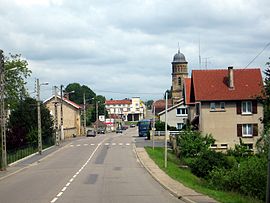Stenay
Stenay
Commune in Grand Est, France
Stenay (French pronunciation: [stənɛ]) is a commune in north-eastern France. It lies in the Meuse department, which is located in the Lorraine portion of the Grand Est region.
You can help expand this article with text translated from the corresponding article in French. (August 2019) Click [show] for important translation instructions.
|
Its inhabitants are called Stenaisiens.[3]




